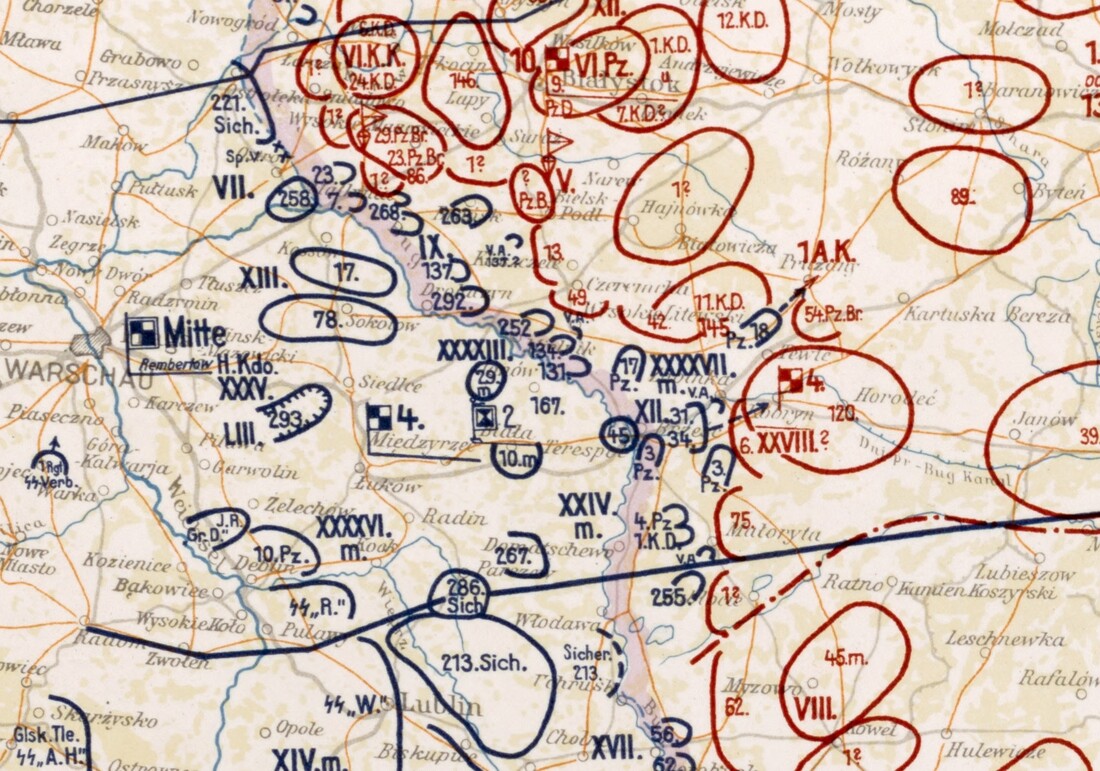Obergefreiter Wilhelm Fischl - 45. Infanterie-Division
|
Wilhelm Fischl was among the earliest awardees of the Iron Cross Second Class during the German invasion of the Soviet Union in 1941. He was a member of 45. Infanterie-Division, specifically with the Staff Company of III. Batallion, Infanterie-Regiment 133. The division was formed in Austria in April 1938 and saw action in both the Polish and French campaigns of 1939 and 1940, respectively. For Operation Barbarossa, 45. Infanterie-Division was subordinate to 4. Armee and Army Group Center, and was tasked to push on to the fortress of Brest-Litowsk. The fortress was actually located in Poland and was the site of the March 1918 peace treaty between Russia and the Central Powers in World War I. During the invasion of Poland in September 1939, it was taken by be the Germans after a tough fight with its Polish defenders, but ultimately turned over (to the dismay of many of the German soldiers who captured it) to the Soviets as part of the German and Russian occupation and by earlier agreement.
The invasion of the Soviet Union began on June 22, 1941 and the fortress was to be taken on the first day. Despite a heavy German bombardment on a surprised Soviet garrison with limited supplies, the attack took a week as the defenders held out against German infantry and artillery. The Red Army troops suffered heavy casualties but were not overrun until June 29th after continued German attacks and heavy reinforcements from bomber aircraft, assault guns, and elements of another infantry division. It has been reported that some small elements of the garrison even held out into August, well after the official Red Army surrender of the fortress. |
In recognition of his actions during the battle, Obergefreiter Fischl was among the troops of 45. Infantrie-Division to be awarded the Iron Cross Second Class. His award was initiated on June 30th, the day after the fighting ended, and presented per the authority of his division commander, Generalleutnant Fritz Schlieper. Fischl was presented an award document with the signature of Schlieper, which was later professionally framed and mounted by him or his family back home in Austria.
A veteran of World War I, Fritz Schlieper was awarded both class of the Iron Cross. During the Second World War, he was decorated again, this time with the Spangen to both the Iron Cross First and Second Class. Schlieper went on to be awarded the Knights Cross of the Iron Cross in December 1941 in recognition of his leadership of 45. Infanterie Division and its drive into Soviet Union, primarily with Army Group Center. The battle for Brest-Litowsk became a famous symbol of Soviet resistance during and after the war.
A veteran of World War I, Fritz Schlieper was awarded both class of the Iron Cross. During the Second World War, he was decorated again, this time with the Spangen to both the Iron Cross First and Second Class. Schlieper went on to be awarded the Knights Cross of the Iron Cross in December 1941 in recognition of his leadership of 45. Infanterie Division and its drive into Soviet Union, primarily with Army Group Center. The battle for Brest-Litowsk became a famous symbol of Soviet resistance during and after the war.
The situation map of Army Group Center on the Eastern Front, June 22, 1941. Note 45. Infanterie-Division opposite the Bug River and Brest-Litowsk.
A modern day view of the fortress entrance at Brest-Litowsk.


